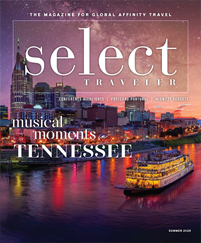An Alaskan Trifecta
We hit a trifecta Sunday, combining the northern lights, Denali and the Iditarod into one memorable day.
Carol Weinman from The Villages, Florida, who was on the inaugural trip last year with her husband, Russell, knocked on our door at 2 a.m. to let us know that the northern lights had returned for an encore after having put on a show earlier in the evening.
I got dressed and joined Carol on the back deck of the lodge where, for the next hour, we got one of our best displays of the intriguing light show, which is put on by bursts of energy from the sun colliding with the earth’s atmosphere. The sky was covered with large clouds, wavering curtains, arcs and thin vertical slices.
You could make out the silhouette of Denali backlit by the lights.
After our short night, we awoke to a sweeping, unobstructed view of Denali, North America’s tallest peak at 20,230 feet, recently officially renamed from Mount McKinley.
“You are among the 30 percent,” said Gailey. It is estimated that only about 30 percent of the people who visit Alaska get to see Denali, often obscured in clouds, in all its majesty.
The morning broke slowly over the mountain, bathing it in a soft, pink glow. When we returned from a sumptuous and abundant breakfast of potatoes, scrambled eggs, bacon, sausage, pancakes, biscuits and gravy served family-style at the Roadhouse in nearby Talkeetna, Denali stood brilliant white against a clear blue sky.
That evening, Denali was caressed in gray shadows that softened it to a nearly impressionist palette.
We left at midday for Willow, where thousands of people gathered on a large frozen lake to cheer on the mushers and their teams of eager dogs as they officially began their long, grueling and dangerous journey of more than a week through the challenging Alaskan wilderness.
“The game is now on,” said Gailey.
Only in Alaska
The next day we drove to Fairbanks, going through a section of Denali National Park and circling around to the north side of the mountain, which now wore a cape of clouds that it maintained for much of the rest of our trip, making us realize how lucky we had been.
As we proceeded north along the Seward Highway, we drove past miles of white and black birches and green spruces, and mountains on both sides of the road completely covered in snow all the way to their base. The snow helped define the ground around the trees in the rolling foothills, making a beautiful wintertime scene.
After checking into our Fairbanks hotel, we drove through the state’s gold mining area to the small town of Chatanika and the Chatanika Lodge for a late night of northern lights viewing.
The lodge is an only-in-Alaska experience. Its ceilings and walls are covered with dollar bills signed by visitors, along with stuffed animal heads, bearskins, guns and knickknacks of every description. The game room has a pool table, video games and a pinball machine, and the Elvis room has a red 1955 Thunderbird convertible, two Harley-Davidson motorcycles and a large cardboard cutout of Elvis Presley.
Owner Shirley Franklin, who had celebrated her 74th birthday earlier in the week, kept it open late just for our group and prepared individual meals for the entire lot, which also ended up including an unannounced and boisterous Japanese reality-television crew.
However, we were mainly there to see the northern lights, called the aurora or simply “the lights” in Alaska. In a large field behind the lodge, we were treated to another expansive display of the lights in the clear night sky.
A note about the northern lights: Although some members of our group captured the brilliant green images you often see in magazines and online with their cameras, that is not what you see with the naked eye. Cameras are able to catch light rays not visible to the eye, so the lights often appear as a grayish white, similar to moonlit clouds, in person.
However, the lights are still pretty impressive, even without the brilliant hues.
Sledding With Champions
The next day we spent a fascinating afternoon at Trail Breaker Kennel, where we took our dogsled rides and got to interact with and pet the dogs.
Owner David Monson, who founded the kennel in 1993 with his late wife, Susan Butcher, an Iditarod legend and four-time winner, greeted us, and Laura Allaway drove Marcheta and me in the sled she used to compete in last year’s Iditarod over a 2.5-mile route.
“They [the dogs] are not bred for looks,” said Allaway. “We really don’t care that much about how they look. They are born to pull, are programmed to pull.”
After flying to McGrath, we checked into our final overnight lodgings at the Chena Hot Springs, an hour outside Fairbanks, where 106-degree mineral hot springs provided three nights of opportunities to see the lights outdoors while wearing bathing suits in single-digit temperatures.
The next day we drove some 200 miles north to the Arctic Circle along portions of the Dalton Highway, also known as the Alaska Haul Road, made famous by the History Channel television series “Ice Road Truckers.”
“We have been in the subarctic,” said Gailey. “Today, we go into the Arctic. When you go home, you can tell everyone you are an ice road trucker.”
The trip drove home the vastness of Alaska, which is larger than the four other largest states combined. When we stopped at a scenic overlook for lunch, Gailey said, “From here, you can see the middle of nowhere.”
We spent the final day at the resort, where we had a variety of options. We elected to take another dogsled ride and visit the Ice Museum, where we had an appletini in a glass made of ice sitting at a bar made of ice.
That evening our group rode snow coaches up the mountainside for a farewell champagne toast and a sweeping view of the surrounding landscape from the top. We were treated to a brilliant sunset over the surrounding mountains, providing an appropriate and stunning exclamation point to our Alaska wintertime adventure.
Meet the Musk Ox
Musk ox, which look like a cross between a hairy bison and a water buffalo, have been around since the ice age, when their similar-looking ancestors roamed the earth alongside saber-toothed tigers and wooly mammoths.
We got to see some of these fascinating animals our first day in Alaska at the Palmer Musk Ox Farm, where nearly 80 musk ox are kept on a 1930s-era farm, with the white snow-capped Chugach and Talkeetna mountains providing a scenic backdrop to its red barns.
“We domesticate musk ox,” said Ashley, a farm employee who showed us around. “We raise our musk ox for their qiviut.”
The musk ox’s qiviut is some of the finest wool in the world. It is eight times warmer than regular wool and softer than cashmere. We can attest to that, after having been handed samples by Ashley.
For more information contact John Hall’s Alaska Cruises and Tours at 800-325-2270 or go to www.kissalaska.com.









